|
Author
|
Topic: Apollo CM Block II Environmental Control Unit
|
SpaceAholic
Member Posts: 4437
From: Sierra Vista, Arizona
Registered: Nov 1999
|
 posted 04-23-2010 10:58 AM
posted 04-23-2010 10:58 AM
   
Preliminary images of another collection addition (in the coming days will include detailed photos of the Environmental Control Unit tracing the function of the individual subsystems with this assembly). The ECU was undoubtedly the most complex electro-mechanical system on the Command Module. Weighing in at 158 pounds it comprised the heart of the ECS (Environmental Control System) and provided the crew with a continuously conditioned atmosphere (this included control of cabin and spacesuit gas circulation, pressure, temperature, removal of debris, moisture, odors and carbon dioxide). There is some evidence to suggest this particular artifact was installed in a flight vehicle. This assembly would have been located in the lower left hand equipment bay as depicted in the diagram below. With close-out panels installed only panel 380 with its associated Demand Regulator (to the top left) would have been normally exposed; any other functions including the exchange of Lithium Hydroxide (LiOH) canisters required the removal of access covers during flight (will demonstrate LiOH filter change out during subsequent images). 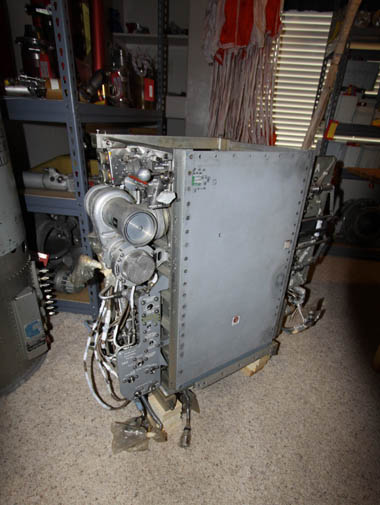 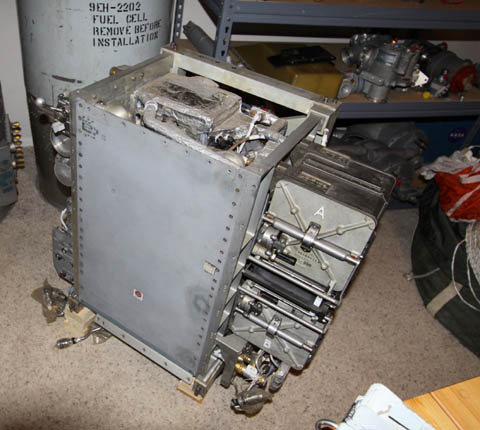
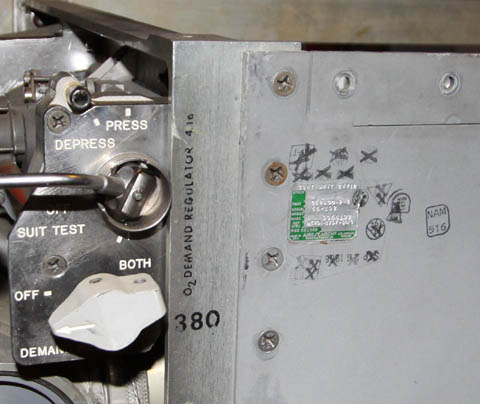
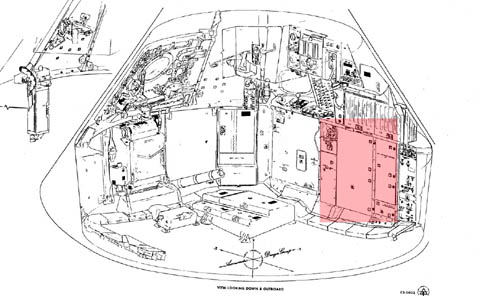
|
garymilgrom
Member Posts: 1966
From: Atlanta, GA
Registered: Feb 2007
|
 posted 04-23-2010 11:17 AM
posted 04-23-2010 11:17 AM
   
Another terrific find for your collection Scott - congratulations! |
SpaceAholic
Member Posts: 4437
From: Sierra Vista, Arizona
Registered: Nov 1999
|
 posted 04-25-2010 07:24 PM
posted 04-25-2010 07:24 PM
   
Front cover removed exposing the complete ECU..this closeout cover incorporated torq-set fasteners which were a challenge to extract (crew access to the ECU itself was not expected during the mission). 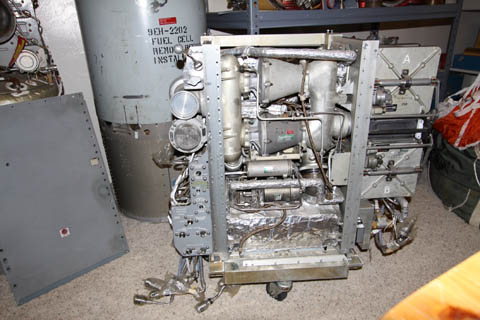 Interior of ECU cover with fire-port visible. 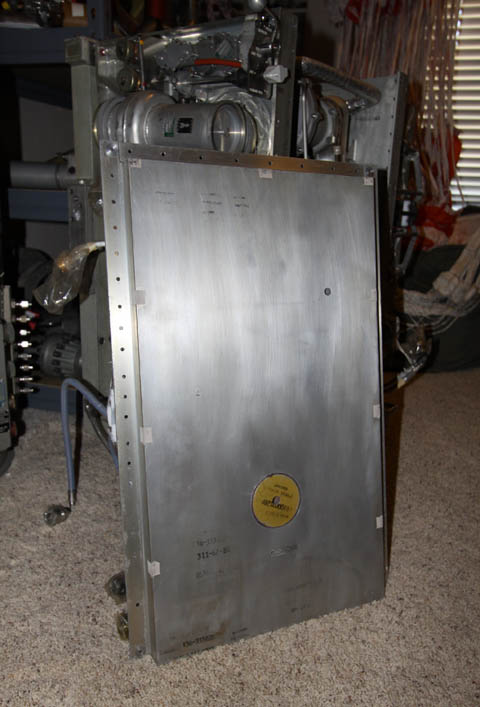 |
SpaceAholic
Member Posts: 4437
From: Sierra Vista, Arizona
Registered: Nov 1999
|
 posted 04-25-2010 08:14 PM
posted 04-25-2010 08:14 PM
   
The balance of the images will consist of a functional walk-through of the ECU starting with the flow of return air from either the cabin (astronauts operating in a shirtsleeve environment) or Pressure Suit Circuit (during launch, reentry, EVA and emergencies). In either instance, this air contains metabolic waste produces (moisture, CO2 and particulates) which will need to be removed or regulated. The interface to the ECU from either source (Cabin or Suit) are dedicated ports located on the left side of the assembly. The suit circuit is isolated via a valve located inline with the Cabin Inlet manifold - its location is shown in the 3rd image below.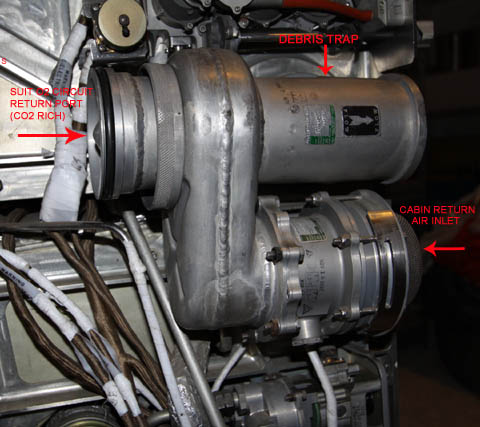 A debris trap provides one of two layers to intercept particulates (the the second layer is located within the LiOH canisters). 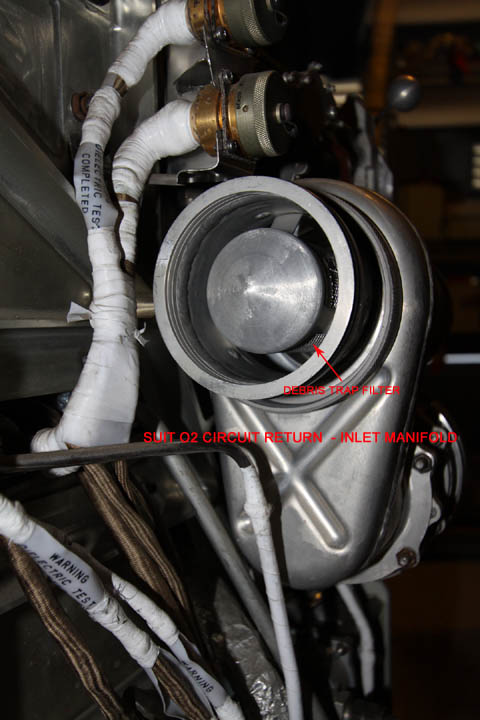 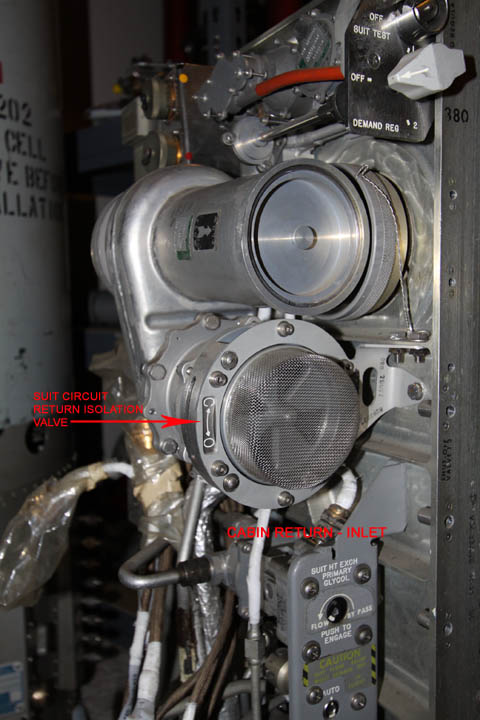 |
DMScott
Member Posts: 354
From: Lexington, MA, USA
Registered: Dec 2005
|
 posted 04-26-2010 03:52 AM
posted 04-26-2010 03:52 AM
   
Fascinating. Thanks for posting the photos Scott. |
SpaceAholic
Member Posts: 4437
From: Sierra Vista, Arizona
Registered: Nov 1999
|
 posted 04-26-2010 04:50 PM
posted 04-26-2010 04:50 PM
   
After passing through the debris trap, cabin/suit gases affiliated with the Pressure Suit Circuit transits through one of two centrifugal compressors. Under normal conditions, only one of these compressors was operated however both could be concurrently enabled if demand required it. These compressors provided circulation of atmospheric gases through the ECU, spacesuits and cabin; delivering 55 pounds per hour of suit-circuit gas (at 35 cubic feet per minute). The outlet of the compressors fed the Lithium Hydroxide canisters.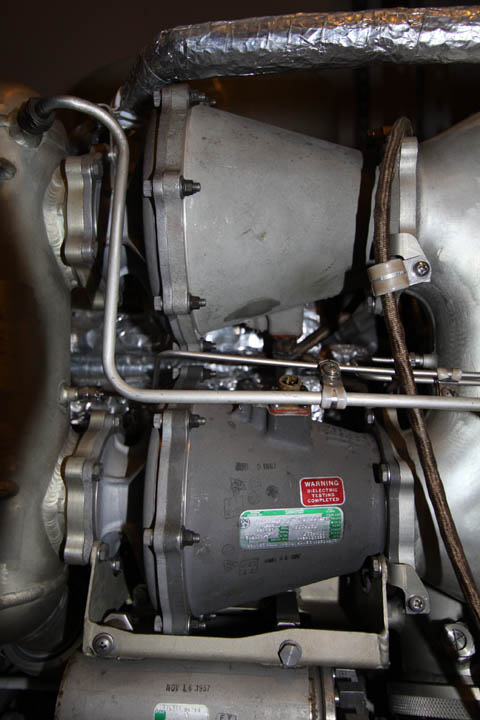 |
SpaceAholic
Member Posts: 4437
From: Sierra Vista, Arizona
Registered: Nov 1999
|
 posted 04-26-2010 05:06 PM
posted 04-26-2010 05:06 PM
   
Once exiting the Suit Compressors, atmospheric gases enter two parallel element holders (canisters) which contain Lithium Hydroxide (LiOH) and activated carbon elements) to remove excess CO2, any particulates which made it through the debris trap, and odor control.
Each of the elements was sized for 1.5 man days of operation and was changed by the crew alternately every 12 hours. The element holders were designed with interlocks to prevent the crew from simultaneously opening both compartments (to preclude inadvertent depressurization of the suit circuit). These interlocks are detailed in the images that follow.Also in the last image, have installed (probably for the first time in 35 years since the conclusion of Apollo Soyuz) a LiOH element in one of the canisters. Because of the tight tolerances (to prevent leakage of scrubbed atmosphere from the downstream to the upstream side, the element doesn't easily slide in, there is a bit of resistance, even with proper alignment). 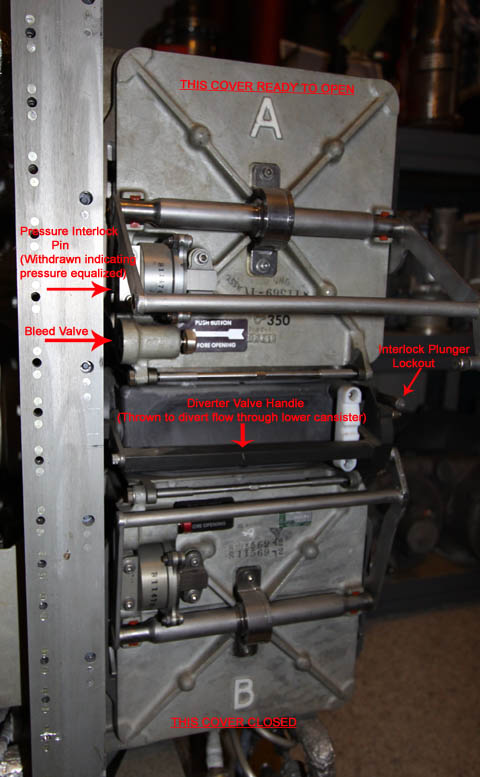 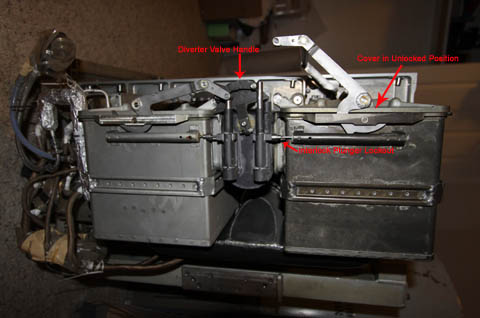
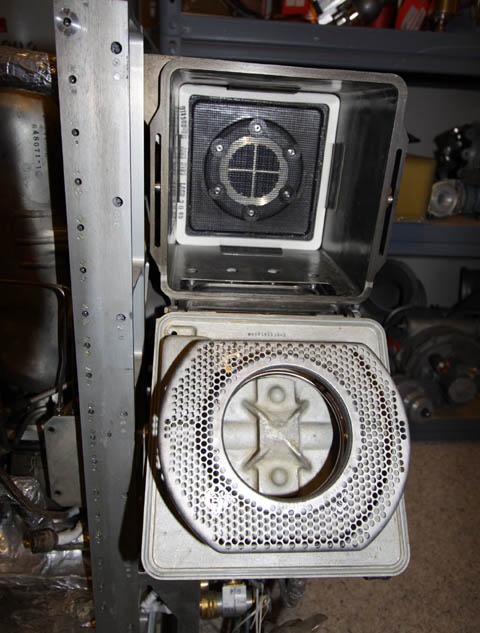
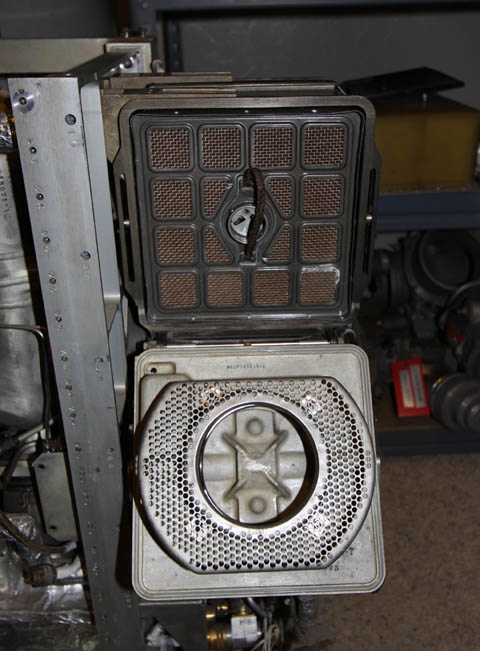
|

























